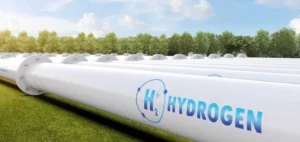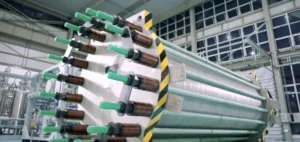Recent announcements of funding for hydrogen projects demonstrate the growing willingness of nations to diversify their energy sources and reduce their carbon footprint.
Canada, Italy, Australia and the UK are at the forefront of this transition.
Canada-Germany partnership
Canada recently declared its intention to invest up to 300 million Canadian dollars to support hydrogen trade with Germany.
This funding, scheduled to be allocated through competitive auctions by the end of the year, is part of the Canada-Germany Hydrogen Alliance.
The aim is to facilitate Canadian companies’ access to German markets for their energy products, while ensuring that Germany benefits from competitively priced energy sources.
This collaboration illustrates the importance of international cooperation in the development of next-generation energy technologies.
It also highlights Canada’s strategy to become a key player in the global hydrogen market.
Italian commitment
At the same time, Italy has activated a 994 million euro fund to support the Important Project of Common European Interest (IPCEI) Hy2Infra project.
This decision follows the European Commission’s authorization to propose state aid from seven European countries for a total of 6.9 billion euros.
The Italian fund aims to strengthen the infrastructure required for the hydrogen boom in Europe, by supporting local companies in the implementation of innovative projects.
The Italian initiative is crucial to the development of a European hydrogen network.
It aims to create a solid base for the expansion of this technology and ensure Europe’s competitiveness in the global energy market.
Research and Development in Australia
Researchers in Australia are focusing on the best methods for exporting hydrogen to Japan by 2030.
Their techno-economic analysis, taking into account the efficiency of PEM electrolyzers and overload capacity, indicates that liquid ammonia (LNH3) and methyl cyclohexane (MCH) are the most cost-effective carriers.
This research is key to understanding how to reduce costs and increase production capacity to make hydrogen more affordable.
The results of this study offer valuable perspectives for hydrogen export, not only for Australia but also for other nations considering similar strategies.
Initiatives in the UK
The UK is no exception, with its Verdant project.
Green Marine UK has obtained approval in principle to retrofit crew transfer vessels with hydrogen, fuel cells and batteries.
The initial phase of the project, which includes a feasibility and preliminary design study, has been deemed viable, paving the way for sea trials and further development phases.
This project reflects the UK’s commitment to exploring innovative and sustainable energy solutions, particularly in the marine sector.
Global Outlook
These funding announcements illustrate the strong international momentum in favor of hydrogen.
They show how different countries, by investing in infrastructure and advanced technologies, are collectively contributing to the global energy transition.
Collaboration between nations, supported by public and private investment, is essential to accelerate the development of sustainable energy solutions.
The efforts of Canada, Italy, Australia and the UK show that hydrogen is becoming a key component of global energy strategy.
By working together and investing heavily, these countries are paving the way for a cleaner, more sustainable future.





















